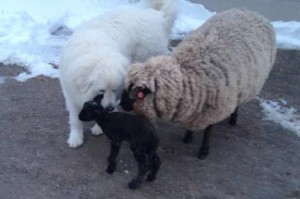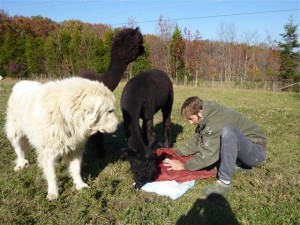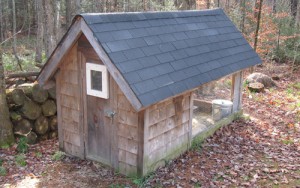 Michele Bye
Michele Bye Animal husbandry practices include communicating proactively with wild carnivores in a mode that they understand. Every farm is different: the landscape, the farm animals, the carnivores present, the human presence, the community you live in to name a few diverse situations. As a result, the animal husbandry practices you use will be specific to your situation.
More detailed information will be shared on these first three:
But the following practices are vital to incorporate on your farm:
Protection of Newborns: Carnivores recognize that newborns are easy to catch, so they will be looking for them. You need to either have the mother give birth within protective housing near human presence OR if they give birth in the pasture, you need to have guardian animals present to protect them. Guardian animals act like midwives, and are very protective of newborns. Note how the ewe feels safe with the Great Pyrenees close to her newborn as pictured here.
Autumn calving and lambing: If your farm situation and weather allow it, calving in the Autumn is another protection for the newborns. The reason being, wild carnivores have their young ones in the Spring, so there will be ample food for them. As a result the need to hunt for food for their young ones heightens the vulnerability of your lambs or calves when they are born in the Spring.
Human presence: The whole concept of the “shepherds” is all about human presence. Wild carnivores recognize humans as a threat, and become much more careful and wary when you are present with your farm animals. In addition, changing the schedule of your presence can be very effective. Wild carnivores are HIGHLY intelligent, and figure out your schedule. Note the alpaca farmer present at the birth of the cria.
Remove dead farm animal bodies: if one of your farm animals dies, do NOT take its body and place it in the forest for the carnivores to eat. Some farmers believe if they do that, the carnivores will not seek out their living farm animals. But that is not the case. What this does is give them a TASTE of the farm animal, and have them wanting more. So instead, BURN or BURY their bodies quickly.
Protective housing: Different farm animals require different housing at different times of the day and different times of the year. Vulnerable species like chickens and ducks should have secure housing to rest for the night. If you do not use guardian animals, it is recommended that newborns are safely inside with their mothers. We will be sharing more about housing. Pictured here, a secure rabbit house with concrete floor.
Mixing livestock: If you have more vulnerable animals like chickens, it is very helpful to integrate larger or more aggressive animals with them. An example: place a couple geese in with your chickens. If any of you have geese, you know what we mean. They are tough birds!
Fladry: This is an inexpensive way to frighten carnivores like coyotes away from your fence. Wild carnivores are afraid of cloth moving in the wind, and will stay away from it. Just cut light weight cloth [the color red is preferred] into strips 50 cm long and 10 cm wide, and attach them on your fence at precise intervals of approximately 3 feet. They should hang at the right height, so the carnivore can neither crawl under nor jump over them.
Useful Books
The following books are excellent resources to learn more. They’re available through your local bookstore, online, or from your local library (try interlibrary loan if your library doesn’t own a copy).
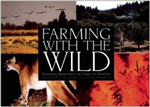 Farming with the Wild by Daniel Imhoff and Roberto Cara 2003
Farming with the Wild by Daniel Imhoff and Roberto Cara 2003
After tireless research all over our country, the authors share with you the outstanding work and vision of farmers and ranchers who seek to farm in cooperation with Wild Nature…..and the rewarding results. These are accounts of real people affecting a whole shift of how we share the land with the wild and how the wild gives back to us in healthy, robust farmland.
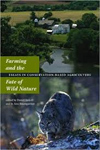 Farming and the Fate of Wild Nature by Joann Baumgartner and Daniel Imhoff 2012
Farming and the Fate of Wild Nature by Joann Baumgartner and Daniel Imhoff 2012
A valuable book that gets one thinking about our relationship with the land, and how thoughtful stewardship can mean success for the farmer, and the wild nature within which he farms.
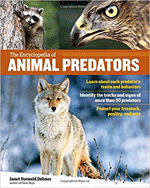 The Encyclopedia of Animal Predators by Janet Vorwald Dohner 2017
The Encyclopedia of Animal Predators by Janet Vorwald Dohner 2017
This is an excellent newly published book that details the lives and behaviors of 50 carnivores present on the American continent. The author is well known for her excellent books on guardian animals to protect one’s livestock from predation. Here she directs her attention to the predators. It is important to get to know them. It is recommended that all our farmers own this important book and refer to it often as a reference. In the last part of the book the author details Nonlethal Prevention Methods and Strategies.


